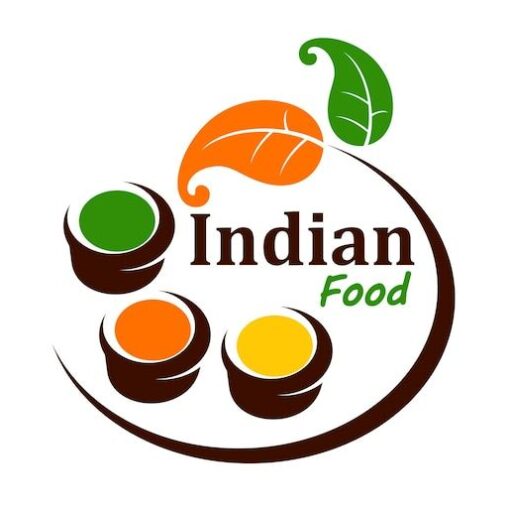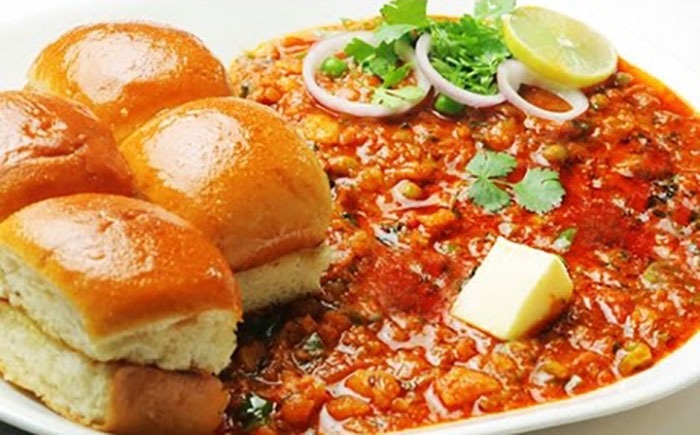No Fancy Ingredients, Just Pure Flavor and Texture Pav Bhaji
🕰️ The History of Pav Bhaji
Pav Bhaji is one of the most beloved street foods in India, and its history is both intriguing and rich in flavor! Here’s a dive into its origins and how it became a national favorite.
🌆 Origin: Mumbai (Bombay)
Pav Bhaji was first created in Mumbai (then Bombay) during the mid-1800s. It has its roots in the bustling streets of the city, and it is said to have been an innovation by street vendors to cater to the working-class population.
🍞 The Birth of Pav Bhaji – The Working-Class Meal
The dish was originally created as a quick, filling meal for mill workers in Bombay. These workers needed a nutritious meal that was quick to prepare, high in calories, and could keep them going through long hours.
As the story goes, hotel owners in Mumbai, particularly around Byculla, began serving leftover vegetables (such as potatoes, peas, carrots, and beans) by mashing them together with spices and serving them with soft buttered pav (bread rolls). The use of butter not only enhanced the flavor but made the dish more calorie-dense for workers who needed that energy boost.
🧑🍳 The Evolution of Pav Bhaji
As the popularity of the dish grew, it was refined and became more flavorful. Vendors started adding masalas (spices) like garam masala, red chili powder, and fresh ingredients such as tomatoes, onions, and garlic. The dish also began to evolve in terms of garnishes: coriander, onions, lemon, and sometimes even a dollop of butter to give it that rich, creamy taste.
🇮🇳 National Phenomenon
By the late 20th century, Pav Bhaji had transcended the streets of Mumbai and become a national delicacy. It became a common feature on street food carts, in dhabas, and even high-end restaurants across India.
Today, Pav Bhaji is enjoyed not only in Mumbai but across the entire country, and it has even found its way into international food scenes. Variations of the dish can be found with cheese, paneer, and other unique twists, but the heart of the dish remains the same: spiced mashed vegetables served with pav.
🍴 Modern-Day Pav Bhaji
While it remains a popular street food, Pav Bhaji has also evolved into an indulgent treat, often served at parties, picnics, or as a comfort food at home. Some modern versions use quinoa, vegetarian meat alternatives, or even truffle oil to give it a gourmet touch.
🌍 Global Appeal
Its influence has spread internationally, especially in countries with a large Indian diaspora. Cities like London, New York, and Dubai have their own versions of the dish, often served in trendy restaurants or by food trucks.
📝 Key Takeaway
Pav Bhaji is a symbol of Mumbai’s hustle and the creativity of its street vendors. From humble beginnings as a worker’s meal to becoming a national and international sensation, this dish has managed to hold onto its comforting, rich, and spiced essence, making it a favorite for all.
🍛 Classic Pav Bhaji Recipe
Total Time: 30 minutes
Prep Time: 10 minutes
Cook Time: 20 minutes
📦 Ingredients for the Bhaji:
| Ingredient | Quantity |
|---|---|
| Potatoes (boiled & mashed) | 2 large |
| Mixed vegetables (peas, carrots, beans, cauliflower) | 1 cup |
| Onion (finely chopped) | 1 large |
| Tomato (chopped) | 1 large |
| Green bell pepper (chopped) | 1 |
| Pav Bhaji masala | 2–3 tbsp |
| Red chili powder | 1 tbsp |
| Turmeric powder | 1 tsp |
| Garam masala | 1/2 tsp |
| Ginger-garlic paste | 1 tsp |
| Butter | 2 tbsp + extra for serving |
| Salt | To taste |
| Water | As needed |
| Fresh coriander (chopped) | For garnish |
| Lemon wedges | For garnish |
📦 Ingredients for the Pav:
| Ingredient | Quantity |
|---|---|
| Pav (bread rolls) | 8 pieces |
| Butter | For toasting |
🍳 Instructions:
- Prepare the Vegetables (5 minutes)
- Boil the mixed vegetables (peas, carrots, beans, cauliflower) until soft (5 minutes). Drain and mash them well. Set aside.
- Cook the Bhaji (15 minutes)
- Heat 2 tbsp butter in a large pan. Add finely chopped onions and sauté until golden brown (4–5 minutes).
- Add ginger-garlic paste and sauté for 1–2 minutes.
- Add tomatoes and bell pepper. Cook until soft (5 minutes).
- Stir in red chili powder, turmeric, garam masala, and Pav Bhaji masala. Cook for 2–3 minutes.
- Combine the Bhaji (5 minutes)
- Add the mashed vegetables to the pan and stir well. Add water as needed to adjust consistency.
- Let it simmer for 5–7 minutes, stirring occasionally. Add salt to taste.
- Garnish with fresh coriander and a dollop of butter.
- Toast the Pav (5 minutes)
- Slice the pav horizontally and toast with butter on a hot pan until golden brown.
- Serve (1 minute)
- Serve the Bhaji hot with the toasted pav, garnish with coriander and lemon wedges.
🍛 Classic Pav Bhaji – Estimated Calories
Ingredients and Calorie Breakdown (per serving):
For the Bhaji:
- Potatoes (2 large): ~300 kcal
- Mixed vegetables (1 cup): ~80 kcal
- Onion (1 large): ~45 kcal
- Tomato (1 large): ~30 kcal
- Green bell pepper (1): ~25 kcal
- Pav Bhaji masala (2–3 tbsp): ~20 kcal (depending on brand)
- Red chili powder (1 tbsp): ~20 kcal
- Garam masala (1/2 tsp): ~5 kcal
- Ginger-garlic paste (1 tsp): ~5 kcal
- Butter (2 tbsp): ~200 kcal
- Fresh coriander (garnish): ~5 kcal
- Lemon wedges: ~5 kcal
For the Pav:
- Pav (1 roll): ~120 kcal (average, can vary depending on brand)
Estimated Total Calories for 1 Serving (1 Bhaji + 1 Pav):
- Bhaji Portion: ~550 kcal
- Pav (1 roll): ~120 kcal
- Total Calories per Serving: ~670 kcal
🥄 Breakdown per Ingredient for 1 Serving:
- Vegetables (Bhaji): 450–500 kcal for a full serving (a large portion of Bhaji).
- Pav (Bread Roll): 120 kcal per roll (most commonly used serving size is 1 pav per person).
🔥 Total for 2 Servings (8 Pav + Bhaji):
- Total for entire dish (8 pav + bhaji): ~1,350–1,400 kcal
- Calories per serving (if 2 servings made): ~670 kcal per person.
This is just an approximate estimate. The actual calories may vary based on the amount of butter, type of pav, and how much water is added to the bhaji.
🥔 Pav Bhaji – Frequently Asked Questions (FAQ)
1. What is Pav Bhaji?
Pav Bhaji is a popular Indian street food consisting of a spiced vegetable curry (bhaji) made from mashed vegetables like potatoes, peas, carrots, and bell peppers, served with buttered pav (bread rolls). It’s typically garnished with fresh coriander and a squeeze of lemon juice.
2. Can I make Pav Bhaji without Pav Bhaji masala?
Yes, you can! If you don’t have Pav Bhaji masala, you can use a combination of garam masala, chili powder, cumin, and coriander powder as a substitute. The flavor won’t be exactly the same, but it will still be delicious.
3. Can I make Pav Bhaji vegan?
Absolutely! To make a vegan version of Pav Bhaji, simply replace the butter with vegan butter or oil, and make sure the pav is dairy-free. Most of the ingredients are naturally vegan.
4. How can I make Pav Bhaji spicier?
If you like it spicier, add green chilies, red chili powder, or even a bit of cayenne pepper. You can also add some chili paste to the bhaji during cooking for an extra heat boost.
5. Can I use any bread for Pav Bhaji?
While traditional pav (bread rolls) are the best option for serving, you can substitute them with burger buns, dinner rolls, or any other soft bread. However, make sure to toast the bread with butter for the best texture and flavor.
6. What vegetables can I use in Pav Bhaji?
You can use a variety of vegetables, but the classic mix includes potatoes, peas, carrots, cauliflower, and bell peppers. Feel free to add or substitute with vegetables like green beans, corn, or even spinach for a twist.
7. Can I prepare the bhaji in advance?
Yes, the bhaji can be made ahead and stored in the fridge for up to 2 days. Reheat it on the stovetop, adding a little water if needed to bring back the consistency. It actually tastes even better the next day, as the flavors have had more time to meld together.
8. How do I prevent the Bhaji from becoming too watery?
If the bhaji is too watery, you can simmer it for longer to allow the water to evaporate. Alternatively, you can add a small amount of cornflour mixed with water to thicken the sauce without compromising the flavor.
9. Can I make Pav Bhaji without potatoes?
Potatoes give the bhaji its creamy texture, but if you want a low-carb version, you can try using cauliflower as a substitute for potatoes. It won’t have the same texture but will still absorb the spices well.
10. What to serve with Pav Bhaji?
Pav Bhaji is typically served with buttered pav (bread rolls) but can also be paired with yogurt, pickle, and onion slices. A cool drink like buttermilk or a sweet lassi complements the spicy Bhaji perfectly.
11. How long will Pav Bhaji last in the fridge?
Pav Bhaji will last in the fridge for up to 2 days when stored in an airtight container. Reheat it on the stovetop with a little water to adjust the consistency before serving.
12. Can I freeze Pav Bhaji?
Yes, Pav Bhaji can be frozen for up to 1 month. Allow it to cool completely, then transfer to an airtight container. When ready to eat, defrost in the refrigerator overnight and reheat on the stovetop or in the microwave.
13. What is the best type of pav for Pav Bhaji?
The ideal pav is soft, slightly fluffy, and slightly sweet. Traditional pav or bread rolls used in Mumbai are perfect, but you can use dinner rolls or burger buns as alternatives. Just be sure to toast the pav with butter for the best taste.
14. What is the history of Pav Bhaji?
Pav Bhaji originated in Mumbai in the mid-1800s as a quick, filling meal for workers in the textile mills. It was created using leftover vegetables, spiced up, and served with bread rolls. It evolved into one of the most popular street foods in India, loved for its rich taste and comforting nature.
15. Can I make Pav Bhaji in a pressure cooker?
Yes, you can make Pav Bhaji in a pressure cooker. Simply cook the vegetables and spices in the pressure cooker for 1–2 whistles, then mash everything together. This method speeds up cooking, but you may need to sauté the spices separately first to bring out the flavors.
🔗 Internal & External Link Suggestions
✅ Internal Link:
Rava Upma(Suji Upma) 6 Essential Ingredients for Mouthwatering


